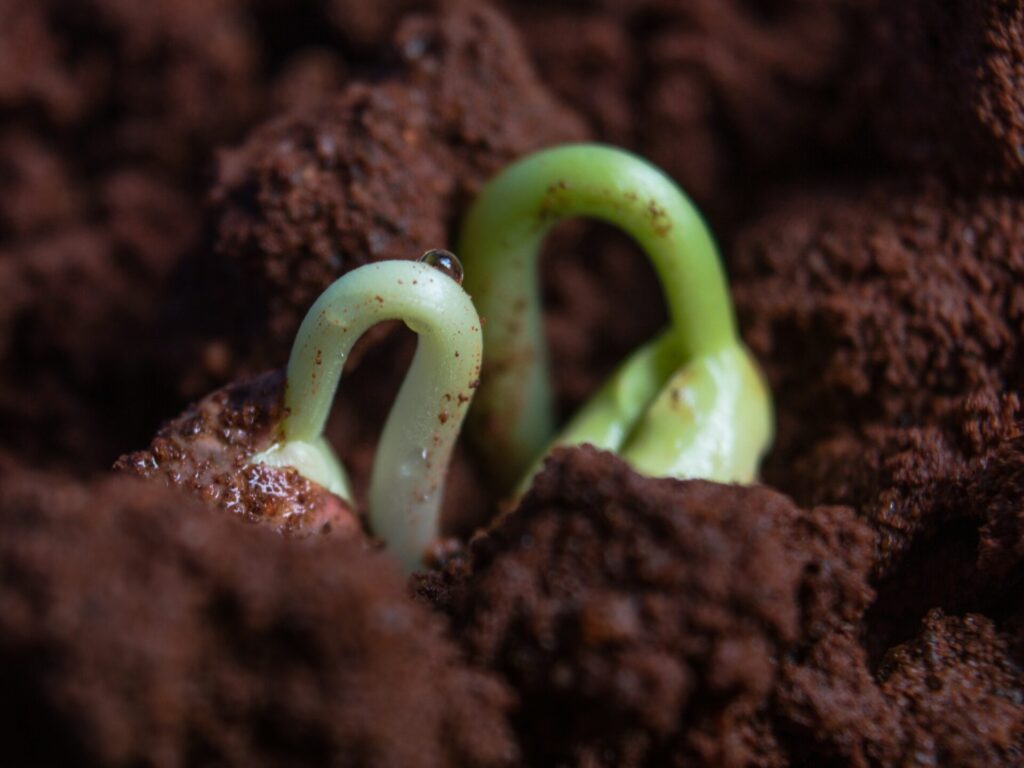Back to the Seed

In “Tree of Yoga”, BKS Iyengar describes the benefits and processes of Yoga. In the recent chapters of reading, he is beginning to take us away from the external aspects of the growth of the tree back toward the sources of the tree and also the source of yoga itself. He returns to the tree metaphor in order to describe the development of an individual life and how the individual might develop consciousness through yoga. And he introduces us to “The Yoga Sutras of Patanjali”, the traditional text of yoga written two thousand five hundred years ago containing 196 short aphorisms put into four chapters.
“The quality of the growth of a tree cannot be seen in the seed, but it is hidden within it. The seed of the human being is the soul, within which the essence of our being is hidden.”
As individuals, we grow from the energy that lies within our soul, our pure consciousness. This pure consciousness must grow outward into an embodiment to be able to “know” itself. Asmita, our individualized physical identification, sprouts the instant we are born into a body. As consciousness (citta) sprouts from the soul outward, it uses many tools to engage with the world and gain wisdom. Three parts of consciousness are in play – manas (mind), buddhi (discrimination), and ahamkara (“I-ness”). Through the use of these aspects of consciousness, we collect data and information, discover likes and dislikes, and become the person we “think” we are. We grow into a particular individual, living in the world through the organs of action (karmendriyas) and the organs of sensation (jnanendriyas). All of this outward engagement fascinates the mind and attracts the senses so we lose connection with the real nourishment of life that is ever-flowing back to our roots. Like the tree that ultimately produces the fruit that contains the seed, all our growth in yoga ultimately blooms by following the energy of our rightful path (dharmendriya) back to our own True Nature.
I love the distinction between consciousness and awareness that BKS Iyengar employs in the “Return to the Seed” chapter. Consciousness IS everywhere, but what are we actually aware of? Iyengar gives this great example of stepping on a thorn. Consciousness is always in the foot, but it might take a thorn in the foot to make us aware of it. If action and sensation by the karmedriyas and jnanedriyas are there to learn from and to build awareness, then we must use them in every nook and cranny of our being. This is why asanas are such great soil in which to plant the seed of our consciousness. Using all our tools to awaken our awareness and understanding of the consciousness that lies throughout the entirety of our being is what becomes YOGA.
All of this may remain an esoteric metaphor until you open The Yoga Sutras of Patanjali. It contains the path to follow for any individual to “still the fluctuations of consciousness” (YS I.2). The first Chapter, Samadhi Pada, reminds us what yoga is and why we might need it. Outside of the state of quiet consciousness that is yoga, at all other times in our life we are under the direction and distraction of the mind drawn outward (YS I.4). This outward attention brings about obstacles (I.30-31) that have certain effects on our minds and bodies, and Patanjali gives us brief insight within this first chapter into how the mind can be brought under control through practice and reflection (YS I.12), meditation and contemplation (YS I.23++).
After Samadhi Pada gives the definition and some means toward stilling the fluctuations, Sadhana Pada, the second chapter, is where most of us begin our “practical practice”. The eight limbs of yoga-sadhana from Yama to Samadhi are illuminated (YS II.29++), providing clear steps toward integration of all aspects of our Self – body, mind, and soul. The layers of the mind and body are all in need of new pathways in order to progress toward the soul. Patanjali covers all the paths required in equal measure to attain YOGA – action, knowledge, and devotion (YS II.1).
The third chapter of The Yoga Sutras, Vibhuti Pada, covers what I call the “naturally super powers”, the true by-products of yoga that can seem rather far fetched at first read. However, once we begin our diligent practice and experience new sensitivities, new awarenesses, and new integrated consciousness within certain areas and aspects of our being, why wouldn’t the power of the soul, the pure potential of the seed, culminate in some pretty amazing experiences? Let’s face it, many of us may view certain asanas a “super power” once experienced. But, we are warned that these powers are just evidence that our practice and consciousness is being cultured and connected. We cannot stop there or give into their distractions either! They are not the goal of yoga. Kaivalya Pada, the last chapter, aims to describe what true integration with the soul entails.
Undisturbed, quiet, pure consciousness is the sight of the soul. Step by step, we must learn about all the layers of our being and then also let them go – use our growth outward to feed back toward our inner journey. Only the soul is permanent. Everything else serves as temporary attachments to gain wisdom.
We must grow and branch and let the leaves fall and sprout again, but never lose sight of the Divine force that remains at the seed of our consciousness.
NEXT READING : “Pranayama” through “Energy and Divine Grace”
SAVE THE DATE FOR DISCUSSION – Saturday, August 23 at 9:00am